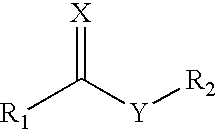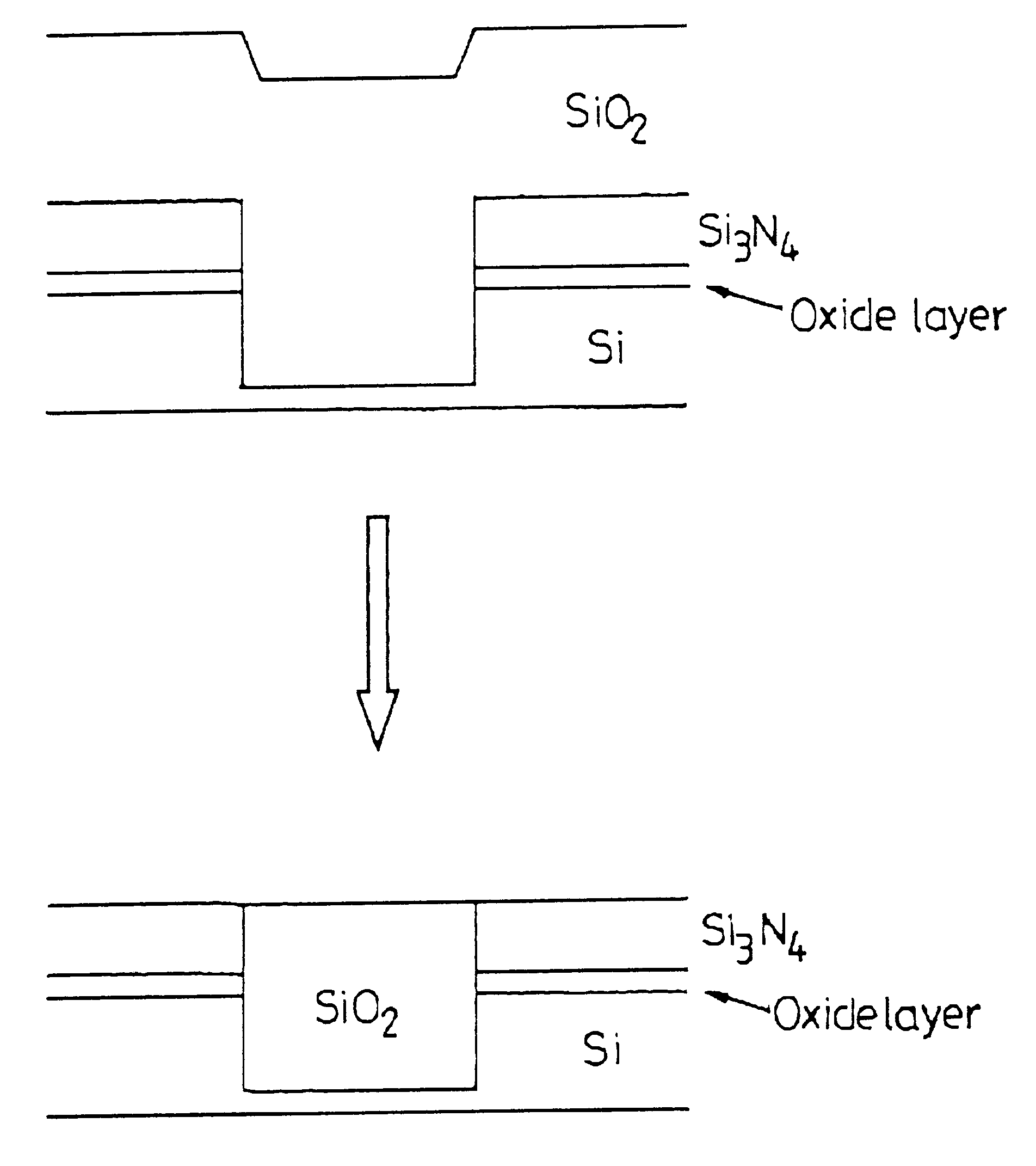Chemical-mechanical abrasive composition and method
a technology of abrasives and compositions, applied in the direction of polishing compositions, other chemical processes, lapping machines, etc., can solve the problems of reducing the abrasion rate and the planarization extent, and defects on the wafer surface, and achieves high purity, high surface area, and enhanced abrasion rate
- Summary
- Abstract
- Description
- Claims
- Application Information
AI Technical Summary
Benefits of technology
Problems solved by technology
Method used
Image
Examples
example 1
Chemical-mechanical abrasive slurries respectively containing methyl glycinate hydrochloride, glycinamide hydrochloride, and aminoguandine carbonate were prepared. The resultant slurries were used to polish TEOS film under the following conditions:
Pressure: 5 psi
Spindle speed: 60 rpm
Platen speed: 50 rpm
The results of the abrasion test for the resultant slurries are listed in Table 1.
The above results reveal that the chemical-mechanical compositions of the present invention can enhance the abrasion rate in conditions with acidic to basic pH values.
example 2
Chemical-mechanical abrasive slurries respectively containing semicarbazide hydrochloride, aminogliamdine carbonate, and guanidine carbonate were prepared. The resultant slurries were used to polish SiO.sub.2 film under the following conditions:
Pressure: 5 psi
Spindle speed: 70 rpm
Platen speed: 50 rpm
The results of the abrasion test for the resultant slurries are listed in Table 2.
example 3
Chemical-mechanical abrasive slurries respectively containing aminoguanidine carbonate, senucarbazide hydrochloride, and guanidine carbonate were prepared. The resultant slurries were used to polish TEOS and silicon nitride films under the following conditions:
Pressure: 5 psi
Spindle speed: 70 rpm
Platen speed: 50 rpm
The results of the abrasion test for the resultant slurries are listed in Table 3.
The above results show that the abrasive compositions of the present invention achieve desired removal rate of TEOS relative to that of silicon nitride, and thus achieve desired abrasion selectivities.
PUM
| Property | Measurement | Unit |
|---|---|---|
| size | aaaaa | aaaaa |
| particle size | aaaaa | aaaaa |
| particle size | aaaaa | aaaaa |
Abstract
Description
Claims
Application Information
 Login to View More
Login to View More - R&D
- Intellectual Property
- Life Sciences
- Materials
- Tech Scout
- Unparalleled Data Quality
- Higher Quality Content
- 60% Fewer Hallucinations
Browse by: Latest US Patents, China's latest patents, Technical Efficacy Thesaurus, Application Domain, Technology Topic, Popular Technical Reports.
© 2025 PatSnap. All rights reserved.Legal|Privacy policy|Modern Slavery Act Transparency Statement|Sitemap|About US| Contact US: help@patsnap.com



